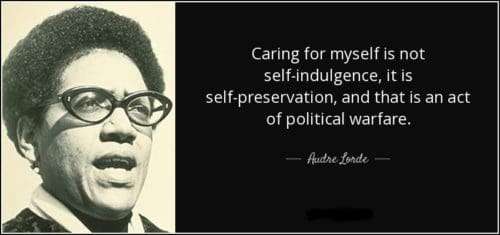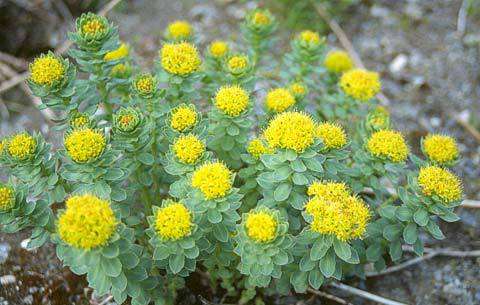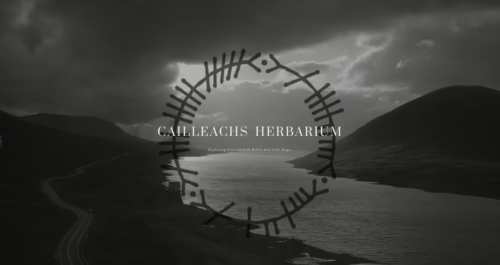Midwinter, a time of the greatest darkness, with still a way till we get to midwinter at the end of January. The sun in Scotland barely rises over the horizon rising late at 9am and setting early at 3pm. The molasses thick Valium orange light of dawn and dusk spread through the streets, over hills and highlight the stark bare tree filled woods. It’s a Gloomy time both outwardly and internally. Its times to look at herbs for resistance.
It’s a natural occasion for dormancy and retreat, but in these modern times we may feel the case of “no retreat no surrender” and “bravehearting” our way through things. We might feel we must keep pushing, working and achieving. It can be hard. Hard politically and socially and emotionally for some. Holidays can bring a rise in stress, financial and physical. Outside of our own worlds things might not be much better. With food banks and homelessness on the rise in the UK, Trump in the presidency in the USA, the far right gaining traction in Europe, Seasonal effective disorder starts to make us all a little more deflated and low in energy. It truly seems like a dark time no matter where we look for solace.
But, there is still that beautiful midwinter glow. That orange Valium light. No matter how brief. That brings us back to a warmer and more relaxed place. As we look toward it, which warms our skin, eases away tension and brightens our day.
Taking this feeling and its folk connections as inspiration I’ve looked at our native plants for an answer. I’ve searched for a few remedies that might help capture the suns rays and warm feeling and herbs for resistance capture this feeling entirely. Which in turn might help support us through this time of year and other times that feels like we are mostly “in the darkness”. Below are some of my personal formulations to help folks feeling hopeless, for the stressed-out family or for the activist or those supporting social actions which do not stop because of the holidays. Hopefully they may help to “bring the glow back”. Please remember I am not considered a qualified herbalist by any means [i], I am a folk herbalist with folk knowledge, learning and background, but I do believe plant medicine is people’s medicine so please use your own judgement when providing for yourself.
If you feel any of these issues raised effect you I would suggest going to see a qualified herbalist, medical practitioner or councillor about it. Also, these are just suggested recipes. The herbs, unlike allopathic drugs, can be used in many ways, combinations and formulations and i hope it might inspire you. I have listed the qualities we are expressing in the formulas next to them but these herbs for resistance heal in many different ways and this is by no means all that they do.
Midwinter glow tea – “Gheamhraidh blàths” [ii] (Winter Warmth)
This is tea is inspired by the aspirations and challenges of the season. It should help as a counter weight to over encumbered nervous systems, helping ease its load and offer support. It’s a bit of sunshine in a mug with deep nutritive properties. Formulated to lift and stabilise the mood and with mild sedative properties for those already overburdened.
Ingredients:
- Hawthorn – heart protecting – 3pts
- St John’s wort – lifts the mood/nutritive– 3pts
- Oat Straw – nervous system nutritive – 1pt
- Betony – nervous system nutritive also very mild tension reducing in the head- 1pt
- Lemon balm – relaxing/tension reducing – 1pt
- Spearmint – for lift and to get the formula moving – ½ pt
- Rose – for beauty and the heart/emotions – ½ pt
If we use the energetic properties of the plants, it’s a pretty neutral formula, if anything perhaps errs on the slightly cooling side, drinking it as a hot tea should remedy this though. Here we are using St John’s Wort as a nervine restorative but it is contraindicated if you are on antidepressant medications. Please check with a professional herbalist if you have any questions or concerns.
Spirited nature – “Spioradaile Nàdar” – Formula for the activist – Herbs for resistance
This year has been one where we have needed to not only to look out for others but also to fight our own corner whilst also looking after ourselves. This is best taken as a tincture as it’s a little bitter but can be delivered in many ways. I have developed it to help with those feeling burnt out and in need of a little respite but must keep going.
Ingredients and formulation
- Milky Oats – 4pts – nerve restorative
- Roseroot – 4pts – Rhodiola Rosea (rose root) – the Viking root (see below)– helps with endurance/adaptogen
- Motherwort – 1pt – heart relaxant/helps manage stress
- Rose – ½ pt – heart and emotional systems
- Nettle seeds – ½ pt – adrenal support
Some folk may find the above formula energetically a little drying and cooling if used over a long period. This is best used in short bursts to give yourself some “off time”. If you are constantly feeling too stressed and burnt out seek professional help.
A hug in a mug – “Hug ann am muga”
I made this simple recipe recently as a tincture for a friend who is having a rough time of it, to be used similar to “Rescue Remedy”. It’s made of equal parts lemon balm and rose with a pinch of cardamom and honey.
- Lemon balm – 1pt
- Rose – 1pt
- Honey – up to 1pt (or to taste)
- Cardamom – (seeds only) very small part a little goes along way – adjust to taste. To make this a native recipe you could choose to use a substitute here like Wood Avens root. I haven’t tried it but the spice is included to warm the formula up a little bit so you could also try cinnamon or anything else you have to hand.
A table-spoon of the tincture added to hot water is ideal pick me up but it can also be taken by the dropper full as required. This can also be formulated into a lovely tasting tea. This is a safe recipe to use anytime when feeling the need to relax or unwell.
A little note about Rhodiola Rosea, the Vikings plant and original herb for resistance..
Rhodiola Rosea, Rose root or “lus nan laoch – plant of heros/warriors” grows on the coastal cliffs and in mountains and it is common in crevices of sea cliffs in western Scotland and Ireland. It’s an evergreen plant with bluish flat leaves and its fleshy root-stock smells like roses when cut. It is thought Rhodiola was popular with the Vikings, who found it gave them greater ‘mental and physical endurance’. You’d also need to be brave to climb up the cliffs to get it! This is a native plant with heritage that supports our health and it’s great to know we have another native “adaptogen” plant here in Scotland.
Notes
[i] To practice is the UK and Europe as a herbalist requires at least 3 years of training i.e a Bachelor’s degree with minimum practice hours – unlike other countries where it’s not so regulated. If you have concerns, please check with a medical or herbal professional before using any of these recipes.
[ii] The Gaelic is my own limited translation and for those that know me is not my strongest suit so please feel free to correct any mistakes.





5 comments
good tea recipe
Looks like just what I need at the moment. Anywhere I can purchase this ready mixed?
You might have some luck looking at your local herbalist shops etc? I currently don’t sell herbal remedies on line :)
I see you live in Somerset so Neil Yard is a good place to get things online, that or Napiers herbal up in scotland or alternatively you can try ordering from Baldwins or somewhere similar.
I’m an American of Scottish decent and I’ve been studying herbalism for a while now but I don’t have any good references books focused on Scottish herbalism and folk history. do you have any recommendations? thank you! I really appreciate your perspective and writing.
thanks so much I do healing threads by Mary Beth is amazing :)